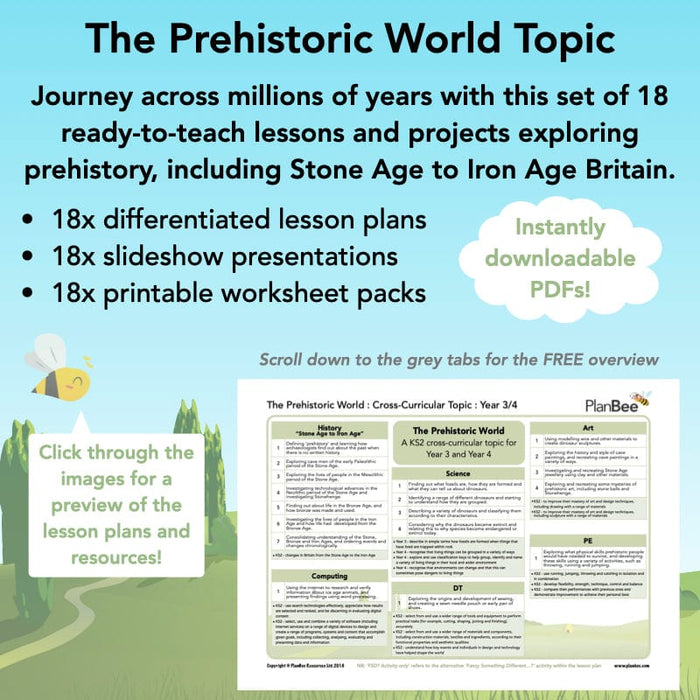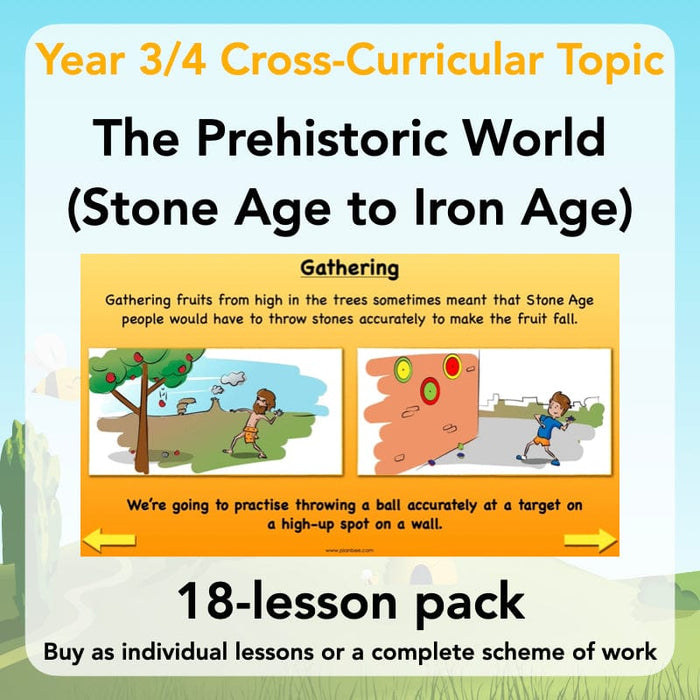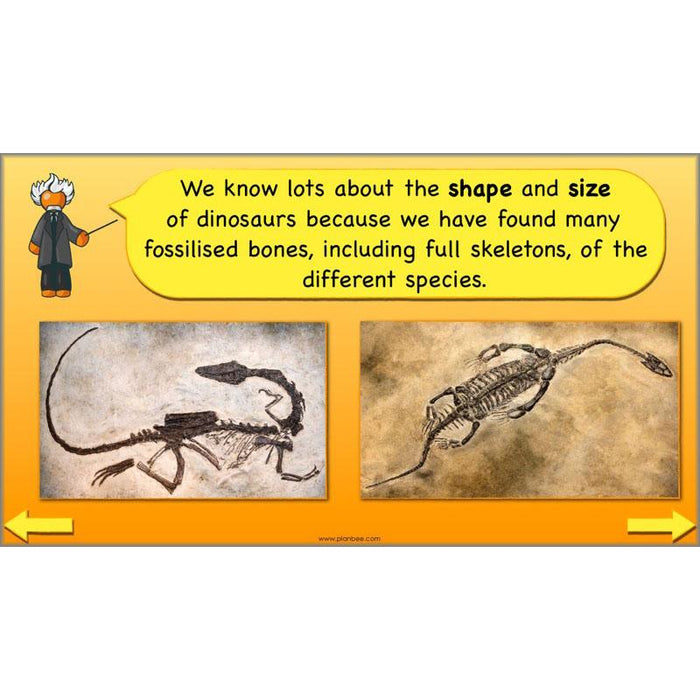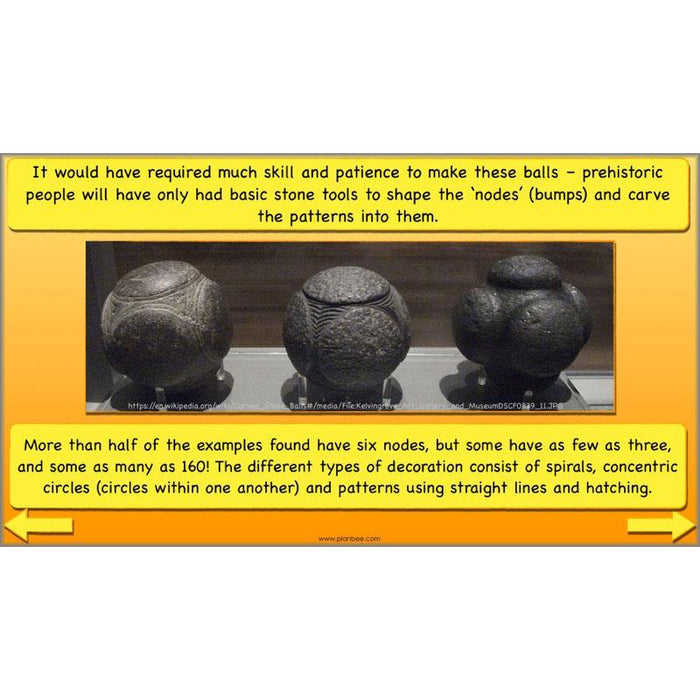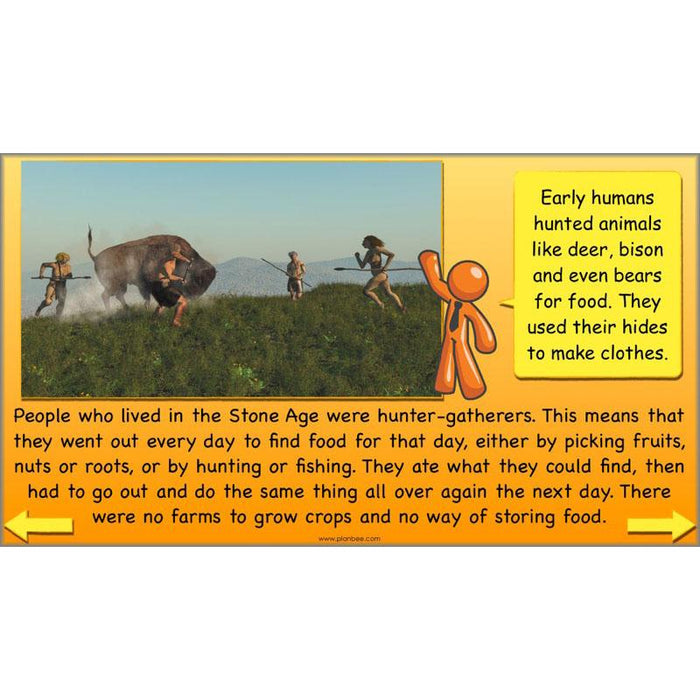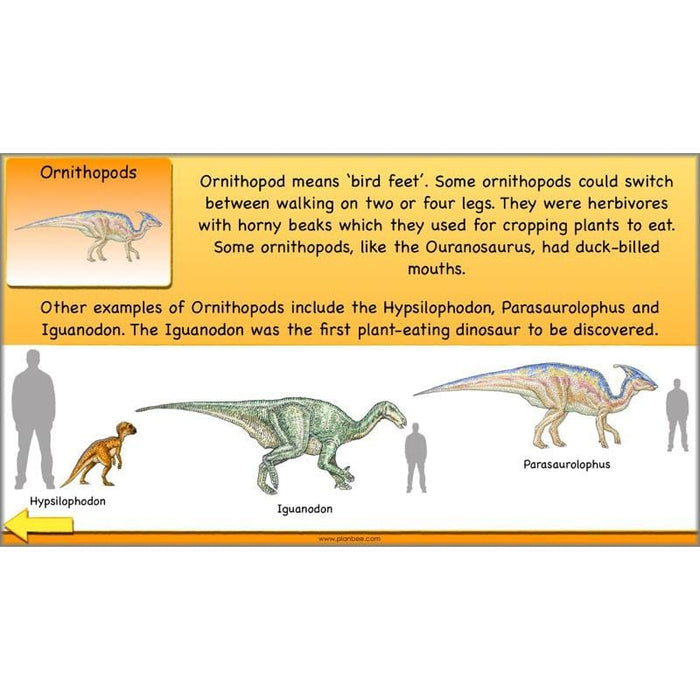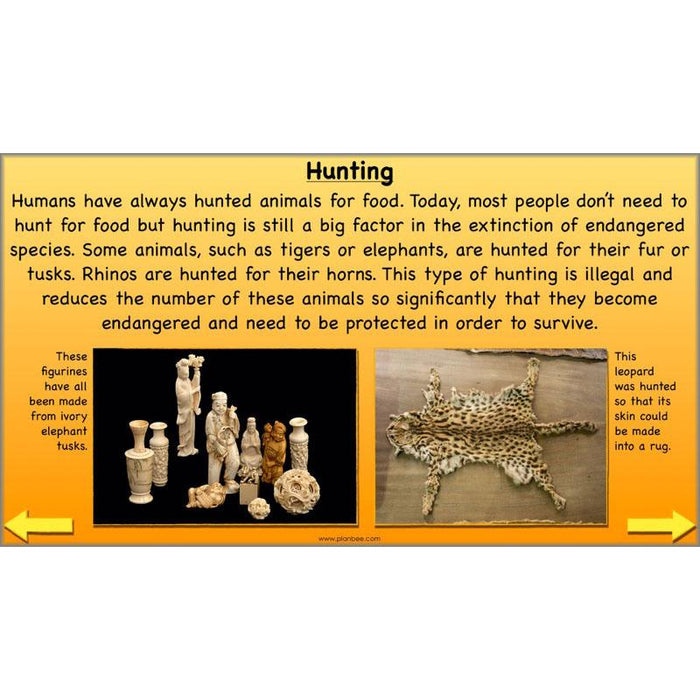#TheCompleteTopic18lessons
This Prehistoric World cross-curricular topic contains 18 detailed lesson plans, each with a corresponding slideshow presentation for the teaching input. It then also has 18 sets of printable resources, including worksheets, picture cards, information sheets, challenges, puzzles and much more! All this means that you have a fantastic half term's worth of topic teaching at the click of a button, so it's great for you, and your class are sure to love it too!
If you are teaching a Stone Age topic then have a look at our collection of Stone Age teaching resources. Here you'll find all our Stone Age and Prehistoric resources in one place!
#AllARTLessonsinTopic
Looking for prehistoric Art lessons for your Prehistoric World topic? We've got four great prehistoric Art lessons all planned and ready for you to download and enjoy with your Year 3 or Year 4 class. Each of these four lessons explores a different type of prehistoric art, exploring artefacts and examples for inspiration before challenging your class to create their own works of art from mysterious stone balls to caveman paintings!
#AllCOMPUTINGLessonsinTopic
Download this Computing lesson as part of a complete Year 3/4 'The Prehistoric World' classic cross-curricular topic.
#AllDTLessonsinTopic
Download this DT project as part of our complete 'The Prehistoric World' classic cross-curricular topic.
#AllStoneAgetoIronAgeHISTORYLessonsinTopic
We've got the Stone Age to Iron Age KS2 objectives covered in this complete set of seven History lessons exploring the fascinating world of prehistoric Britain. Your class will journey through a million years of prehistory as they explore the Stone Age, Bronze Age and Iron Age, discovering how humans first came to Britain, how they lived and what developments were made during each era.
Within this Stone Age to Iron Age KS2 History series are seven detailed lessons plans with a corresponding slideshow for each teaching input, packed full of information, facts and questions to challenge your class's historical enquiry skills. Also included in each lesson are differentiated activity ideas and a range of printable resources, such as worksheets, picture cards, information sheets, challenges and quizzes. All the research and planning has been done for you, so all you need to do is sit back and enjoy learning about prehistoric Britain with your class!
#AllPELessonsinTopic
Download this PE lesson to use as part of a complete Year 3/4 'The Prehistoric World' classic cross-curricular topic.
#AllSCIENCELessonsinTopic
This set of four Prehistoric Science lessons takes your Year 3 or Year 4 class back to the age of the dinosaurs as they explore how fossils are formed, how to identify and classify dinosaurs, and consider what happened to cause the end of the dinosaurs.
If you're looking for Science lessons to fit in with your KS2 Stone Age to Iron Age topic, then these are the perfect way to get the Year 3/4 Science objectives covered whilst still staying on topic. And they're fully planned, resourced and ready to teach!
#Lesson1ArtDinosaurs
This fun and informative dinosaur Art lesson for KS2 children will help your class explore what dinosaurs looked like, including their size, shape, colour and skin texture, and how we know so much about this. They will then be challenged to use this knowledge and their sculpture skills to create a 3D model of a dinosaur, or make a dinosaur skeleton.
The slideshow presentation provided for the teaching input will show children some handy hints and tips for creating their own dinosaur art masterpieces and will give them the tools they need to let their creativity roam free!
What's included:
- Lesson plan
- Slides
- Activity ideas
- Dinosaur Challenge Cards
- 3D Dinosaur Instruction Sheet
- Dinosaur Skeleton Sheets
- Dinosaur Skeleton Instruction Sheet
#Lesson2ArtCavePaintings
This Stone Age cave paintings KS2 Art lesson will teach your class everything they need to know about Stone Age cave paintings and how they can create their very own replicas. Your Year 3 or Year 4 children will explore many different cave paintings that have been found all around the world, considering the themes, patterns and colours in the images they see. They will find out how prehistoric people made their paints and think about why these paintings were created.
Once they have a good understanding of Stone Age cave paintings, they will then have the chance to create their own cave paintings in a variety of ways and using different media.
What's included:
- Lesson plan
- Slides
- Activity ideas
- Animal Templates
- Cave Paintings Instructions Sheet
- Hand Art Instructions Sheet
#Lesson3ArtStoneAgeJewellery
This Stone Age jewellery KS2 Art lesson will fascinate your class as they learn about the earliest jewellery in the world. Your Year 3 or Year 4 children will explore examples of Stone Age jewellery, exploring why people starting using beads and what beads were made from, including shells and teeth.
Your class will then design and make their very own Stone Age jewellery by creating different shapes of beads from clay. Alternatively, they can decorate a stone pendant with symbols found in prehistoric cave paintings.
What's included:
- Lesson plan
- Slides
- Activity ideas
- Jewellery Design Sheet
- Bead Instruction Sheet
- Jewellery Instruction Sheet
- Pendant Design Sheet
- Pendant Instruction Sheet
- Pendant Design Ideas Sheet
#Lesson4ArtStoneAgeArt
Stone Age art is full of mysteries that your class can explore together in this fascinating lesson for Year 3 and Year 4. This Stone Age Art KS2 planning pack gives your children two choices for artwork they can make for themselves.
Firstly, they will explore the mysterious stone balls of the Stone Age, thinking about what they might have been used for and how they might have been carved using only simple tools. They can then have a go at creating their own from clay.
Alternatively, they can look at the mysterious Stonehenge before creating some Stonehenge art of their own, using silhouettes and colourful backgrounds. Of course, if you can't decide, you can do both over two lessons!
What's included:
- Lesson plan
- Slides
- Activity ideas
- Stone Ball Picture Cards
- Challenge Cards
- Museum Plaque Sheet
- Stonehenge Silhouette Template
- Stonehenge Instruction Sheet
#Lesson5ComputingIceAgeAnimals
Show your class three 'facts' about Ice Age animals that lived in Britain during the Stone Age as the starting point to get them considering the information they find on the internet. They will think about how search engines work and how search terms can be used effectively, before thinking about how they can verify if the information they find online is correct. They are then given some information on a simple Word document to check (and correct if necessary) before being challenged to present their verified information on Ice Age animals in an engaging way.
What's included:
- Lesson plan
- Slides
- Activity ideas
- Differentiated Ice Age documents
- Animal Cards
- Differentiated worksheets
#Lesson6DTTheInventionoftheNeedle
In this DT lesson, your children will find out how sewing developed in prehistoric times, from the use of awls to the creation of needles. The slideshow presentation for the teaching input demonstrates the importance of the invention of the needle and looks at Stone Age clothes and Stone Age shoes. Children are then shown some handy step-by-step tips for sewing their own prehistoric needle pouches.
In their independent learning, children can then create their own needle pouches (with the help of both left- and right-handed sewing sheets) or they can create their very own replica Stone Age shoes!
What's included:
- Lesson plan
- Slides
- Activity ideas
- Needle Pouch Template
- Needle Pouch Instruction Sheet
- Stitch Instruction Sheets (for left-handers and right-handers)
- Prehistoric Shoe Instruction Sheet
#Lesson7HistoryWhatisPrehistory
What is prehistory? This is the question that is posed to your class at the beginning of this lesson as they start to consider how we learn about a time in the past before there were written records of events and people. They will explore a prehistoric Britain timeline, placing the Stone Age, Bronze Age and Iron Age chronologically, and think about how archaeologists find out about these periods when there is no written evidence to rely on.
This 'What is prehistory?' KS2 History lesson is a great way to introduce your class to prehistoric Britain and contains all the planning and resources you need in one handy download.
What's included:
- Lesson plan
- Slides
- Activity ideas
- Differentiated worksheets
- Picture cards
- Description cards
#Lesson8HistoryStoneAgePeople
This Stone Age KS2 History lesson for Year 3 and Year 4 classes recaps the timeline of prehistoric Britain before going on to explore the earliest part of the Stone Age – the Palaeolithic period. Your children will find out what Britain was like when it was still part of mainland Europe and then look at Stone Age people, Homo sapiens, and how and when these Stone Age people first came to Britain.
What's included:
- Lesson plan
- Slides
- Activity ideas
- Differentiated worksheets
- Picture sheet
#Lesson9HistoryStarCarr
Your class will have the chance to explore a famous Stone Age archaeological site in this Star Carr KS2 lesson as they continue to learn about the Stone Age and the people who lived during the Mesolithic era. They will start by finding out how the melting ice sheets from the last Ice Age caused Britain to become an island, then go on to explore what life was like for the people who lived in Britain at the time.
The artefacts found at Star Carr in Yorkshire provide a fascinating insight into life during the Stone Age, and gives your KS2 class the chance to explore this for themselves. They can even make their own Star Carr antler headdresses!
What's included:
- Lesson plan
- Slides
- Activity ideas
#Lesson10HistoryStonehenge
Stonehenge is one of the greatest mysteries in the world? How did it get there? Who built it and why?
This Stonehenge KS2 History lesson will start by providing some context and looking at how life in the Stone Age had moved on by the Neolithic period and how people had started farming. It then goes on to look at Stonehenge, challenging your class to think about what they can learn about the Stone Age from this site. In their independent work, your Year 3 or Year 4 class can go on a Stonehenge fact hunt using the fact cards and maps provided, or reconstruct Stonehenge for themselves using the information given.
What's included:
- Lesson plan
- Slides
- Activity ideas
- Differentiated worksheets
- Fact cards
- Stonehenge map
- Stonehenge information sheet
#Lesson11HistoryTheBronzeAge
This Bronze Age KS2 History lesson for Year 3 and Year 4 moves on from the Stone Age to explore how life in prehistoric Britain had changed as the Bronze Age dawned. Your class will find out about the bronze-making process, as well as exploring Bronze Age tools, weapons, building materials and other objects.
After the slides in the teaching input have given your class some information about the Bronze Age, your children can then explore the life of a Bronze Age sword from mining the metals to being placed in the sacred marsh when its chief owner dies. Alternatively, they can find out what life might have been like for a child living in the Bronze Age.
What's included:
- Lesson plan
- Slides
- Activity ideas
- Differentiated worksheets
- Information sheet
- Picture sheet
- Differentiated storyboards
#Lesson12HistoryTheIronAge
Download this Iron Age KS2 History lesson for Year 3 and Year 4 to explore with your class what life was like in Iron Age Britain. Your children will explore farmsteads, hillforts and more before looking at Celtic and Roman influences on Britain. Finally, they will read accounts of society at the time from Roman writers who visited Britain.
Not only will this Iron Age KS2 lesson plan help your children learn about this fascinating prehistoric era, but it will also help develop their historical enquiry and reasoning skills. And it's all prepared and ready to go!
What's included:
- Lesson plan
- Slides
- Activity ideas
- Differentiated worksheets
- Differentiated quote sheets
#Lesson13HistoryStoneAgetoIronAgeFacts
The final lesson in this series gives your class the chance to consolidate all the Stone Age to Iron Age facts that they have learnt throughout the scheme of work. They are challenged to order changes and developments chronologically before having the chance to express their Stone Age to Iron Age understanding in a variety of fun ways.
The lesson ends with a whole class quiz on some key facts on prehistoric Britain, giving them the chance to show off just how much they have learnt!
What's included:
- Lesson plan
- Slides
- Activity ideas
- Differentiated timeline cards
- Information booklet template
- Challenge cards
- Prehistory acrostic sheet
- Poster template
- Quiz template
#Lesson14PEStoneAgeSurvival
Stone Age survival depended on early humans being physically able to perform certain tasks. This fun PE lesson will test your class's Stone Age survival skills as they use their bodies to find out how well they would have fared if they had lived in prehistoric Britain!
Your Year 3 or Year 4 class will undertake a variety of physical challenges that mimic activities undertaken by Stone Age people, and practise and refine their skills. Can they throw a javelin accurately and thus throw a spear? Can they aim a bean bag at a high point in the same way a Stone Age hunter-gatherer might throw stones in a tree to get fruit to fall? Find out with your children as they test their Stone Age survival skills!
What's included:
- Lesson plan
- Slides
- Activity ideas
- Challenge cards
- Activity cards
- Teacher’s notes
#Lesson15ScienceFossilFormation
This fossil formation KS2 Science lesson explores the fossil formation of dinosaurs. Your class will firstly be encouraged to think about how we know what kind of animals lived in prehistoric times. They will then go on to look at how dinosaur fossils were formed, using a set of clear illustrations for the children to explore.
During their independent activities, they can either explain in their own words how fossils are formed or practise and perform a role-play between a palaeontologist and a TV reporter.
What's included:
- Lesson plan
- Slides
- Activity ideas
- Differentiated booklet templates
- Information sheet
- Role Play Card
#Lesson16ScienceIdentifyingDinosaurs
Your class will be very busy identifying dinosaurs in this fun Science lesson as they explore and name different species of dinosaurs. They will explore some broad groups of dinosaurs, such as theropods and sauropods, before identifying dinosaurs from their descriptions.
The printable resources that come with this lesson provide a tonne of facts about different dinosaurs, and challenges your class to identify dinosaurs according to their descriptions. They can complete some dinosaur crosswords, or carry out their own research to learn more about a specific dinosaur.
What's included:
- Lesson plan
- Slides
- Activity ideas
- Description, picture and fact cards
- Differentiated crosswords
- Dinosaur cards
- Worksheet
- Name cards
#Lesson17ScienceDinosaurClassification
Now that your class can recognise and describe a variety of dinosaurs, they are challenged to move on to dinosaur classification. They will start by thinking of some different ways they could put some given dinosaurs into groups before seeing if they can spot how groups of dinosaurs have been classified.
There are lots of fun activities they can undertake to hone these skills during their independent learning after going through some examples on the slideshow presentation for the teaching input.
What's included:
- Lesson plan
- Slides
- Activity ideas
- Dinosaur species sheet
- Differentiated worksheets
- Picture cards
- Group name cards
- Dinosaur classification sheet
#Lesson18ScienceTheEndoftheDinosaurs
The final lesson in the Science series explores some of the theories behind the extinction of the dinosaurs. Children will consider what they think the most likely theory is, as well as comparing dinosaur extinction to the extinction and endangerment of animals today. During their independent tasks, they can either describe in their own way what they think caused the end of the dinosaurs, or they can carry out some research into a particular animal that is endangered today.
What's included:
- Lesson plan
- Slides
- Activity ideas
- Differentiated worksheets
- Writing frames
- Information sheet
- Endangered Animals cards
Free Overview (Medium-Term Plan)
Download a free overview to support your teaching of this scheme of work.
Free Assessment Grid
Download a free, editable assessment grid to support your teaching of this scheme of work.
Curriculum Objectives covered
Art Objectives:
- KS2 - to improve their mastery of art and design techniques, including drawing with a range of materials
- KS2 - to improve their mastery of art and design techniques, including sculpture with a range of materials
Computing Objectives:
- KS2 - use search technologies effectively, appreciate how results are selected and ranked, and be discerning in evaluating digital content
- KS2 - select, use and combine a variety of software (including internet services) on a range of digital devices to design and create a range of programs, systems and content that accomplish given goals, including collecting, analysing, evaluating and presenting data and information
Design and Technology Objectives:
- KS2 - select from and use a wider range of tools and equipment to perform practical tasks [for example, cutting, shaping, joining and finishing], accurately
- KS2 - select from and use a wider range of materials and components, including construction materials, textiles and ingredients, according to their functional properties and aesthetic qualities
- KS2 - understand how key events and individuals in design and technology have helped shape the world
History Objectives:
KS2 - changes in Britain from the Stone Age to the Iron Age
PE Objectives:
- KS2 - use running, jumping, throwing and catching in isolation and in combination
- KS2 - develop flexibility, strength, technique, control and balance
- KS2 - compare their performances with previous ones and demonstrate improvement to achieve their personal best
Science Objectives:
Year 3 Rocks Objectives
- describe in simple terms how fossils are formed when things that have lived are trapped within rock
Year 4 Living things and their Habitats Objectives
- recognise that living things can be grouped in a variety of ways
- explore and use classification keys to help group, identify and name a variety of living things in their local and wider environment
- recognise that environments can change and that this can sometimes pose dangers to living things
